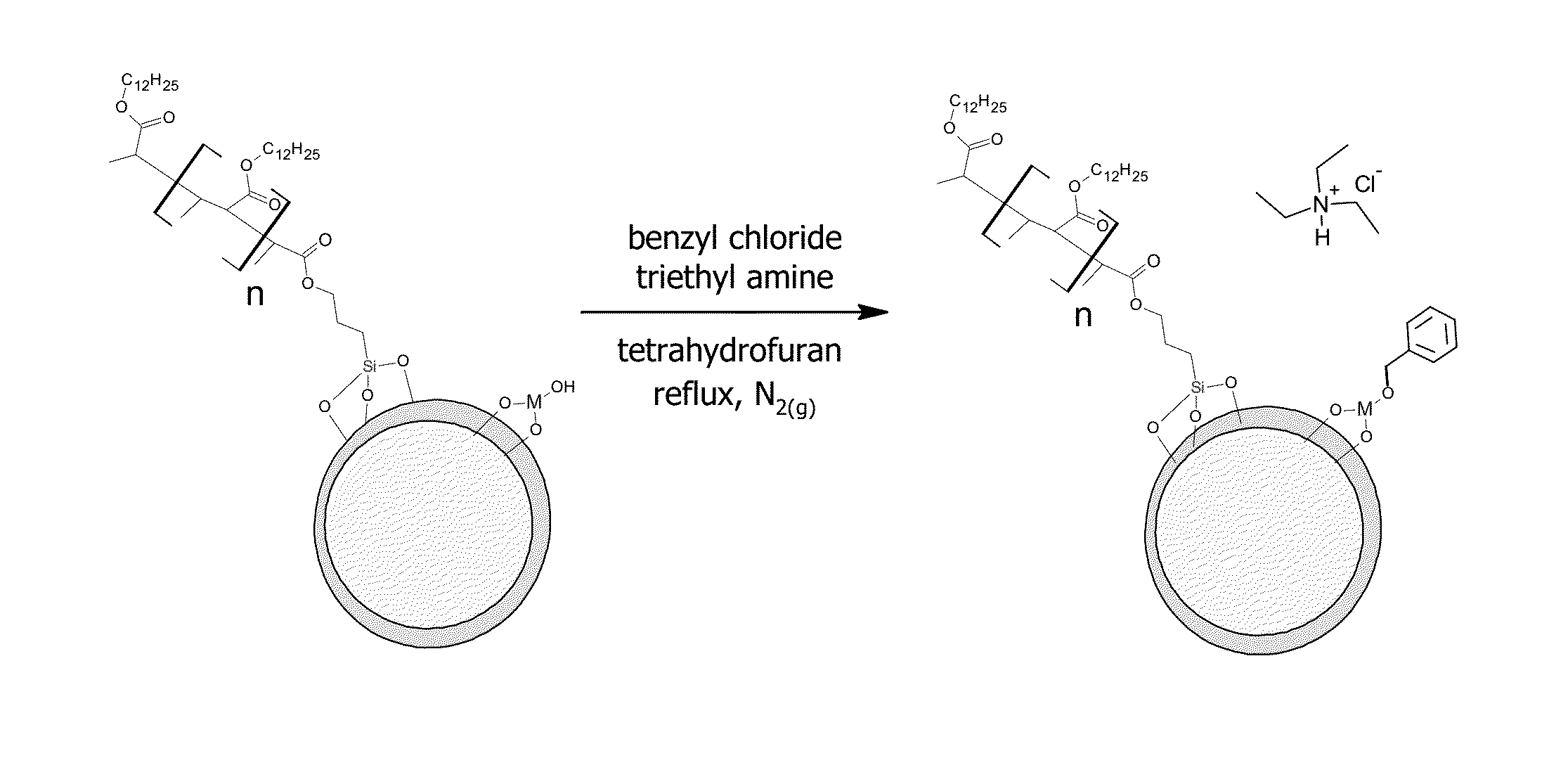Electrophoretic particles and processes for the production thereof
- Summary
- Abstract
- Description
- Claims
- Application Information
AI Technical Summary
Benefits of technology
Problems solved by technology
Method used
Image
Examples
example 1
Surface Modification Using Anionic Modifying Agents
[0053]The pigment being treated was dispersed at approximately 25% (by weight) in ethanol, and dilute hydrochloric acid was added to ensure the solution was well below the isoelectric point of the pigment. 3-Sulfopropyl methacrylate potassium salt (SPMK) (about 50-100 mg for each gram of pigment) was dissolved in water and added to the pigment dispersion. The solution is allowed to mix for several hours, then centrifuged and the solid residue washed twice with ethanol. The resulting pigment may be allowed to dry (this is not essential) and then dispersed into toluene for polymerization substantially as described in Example 28 of the aforementioned U.S. Pat. No. 6,822,782.
example 2
Surface Modification Using Cationic Modifying Agents
[0054]The pigment being treated was dispersed at approximately 25% (by weight) in ethanol, and aqueous ammonia was added to ensure the solution was well above the isoelectric point of the pigment. [3-(Methacryloyloxy)ethyl]trimethylammonium chloride (MAETAC) (about 50-100 mg for each gram of pigment) was dissolved in water and added to the pigment dispersion. The solution is allowed to mix for several hours, then centrifuged and the solid residue washed twice with ethanol. The resulting pigment may be allowed to dry (this is not essential) and then dispersed into toluene for polymerization substantially as described in Example 28 of the aforementioned U.S. Pat. No. 6,822,782. If the pigment was not dried, a solvent switch procedure can be effected to yield a pigment dispersion in toluene.
example 3
Analysis of Various Pigments Produced by the Absorption Process
[0055]Various pigments were treated by the absorption process of the invention with either SPMK or MAETAC as described in Examples 1 and 2 above, then washed, dispersed in toluene and a coating of poly(lauryl methacrylate) substantially as described in Example 28 of the aforementioned U.S. Pat. No. 6,822,782. The resultant polymer-coated pigments were tested by thermogravimetric analysis and suspended in Isopar E (a commercial hydrocarbon solvent) with the addition of 25 mg per gram of pigment of Solsperse 17K (a charge control agent), and their zeta potentials measured. The TGA values of the raw pigment, the functionalized pigment and the polymer-coated pigment are shown in Table 1 below.
TABLE 1SurfaceNotebook #PigmentFunctionalizationTGArawTGAsfTGApolyζ(mV)662-75-ADupont R-794MAETAC1.187%1.56%4.95%+65.5662-74-ADupont R-794SPMK1.187%1.55%6.78%+46.3662-60Shepherd Blue 385MAETAC0.623%2.01%5.61%+85.8662-72Shepherd Blue 385...
PUM
 Login to View More
Login to View More Abstract
Description
Claims
Application Information
 Login to View More
Login to View More - R&D
- Intellectual Property
- Life Sciences
- Materials
- Tech Scout
- Unparalleled Data Quality
- Higher Quality Content
- 60% Fewer Hallucinations
Browse by: Latest US Patents, China's latest patents, Technical Efficacy Thesaurus, Application Domain, Technology Topic, Popular Technical Reports.
© 2025 PatSnap. All rights reserved.Legal|Privacy policy|Modern Slavery Act Transparency Statement|Sitemap|About US| Contact US: help@patsnap.com



